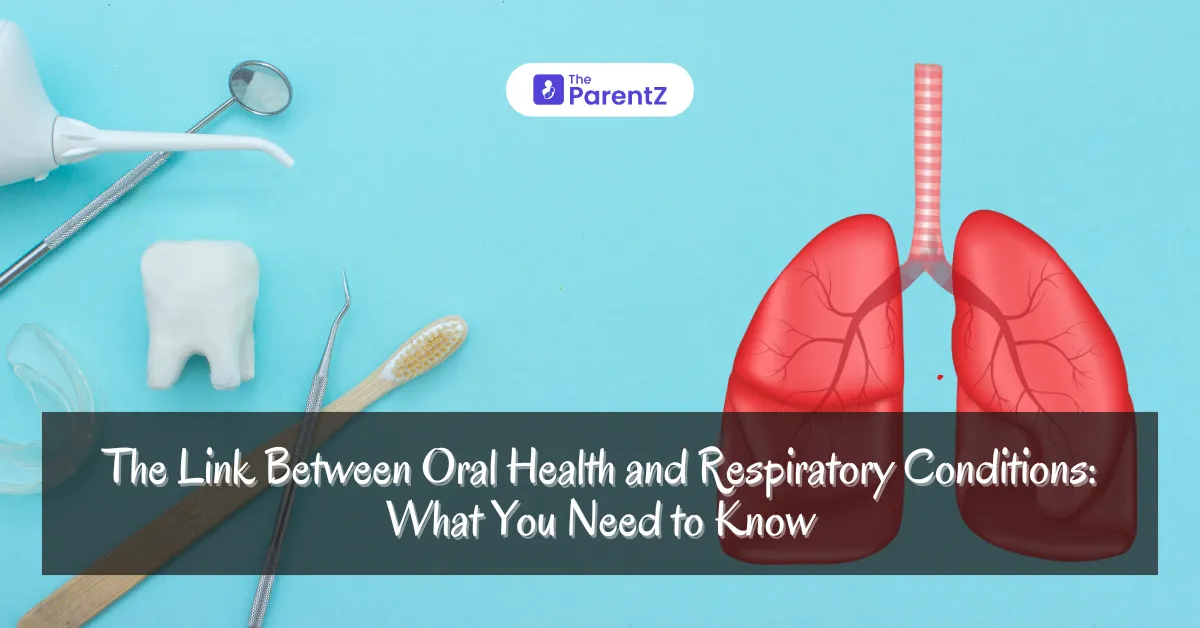Oral health isn’t just about having a bright smile—it’s a gateway to overall health. Surprisingly, the state of your mouth can significantly impact your respiratory system. Poor oral hygiene and gum diseases have been linked to respiratory conditions, including pneumonia, chronic obstructive pulmonary disease (COPD), and bronchitis.
What Is Oral Health?
Oral health refers to the condition of your teeth, gums, and overall oral cavity. Good oral health is achieved through:
• Proper brushing and flossing habits
• Regular dental checkups
• A balanced diet
Neglected oral health can lead to conditions such as gingivitis, periodontitis, and tooth decay, which may affect other bodily systems, including the respiratory system.
What Are Respiratory Conditions?
Respiratory conditions involve the lungs and airways, making it difficult to breathe properly. Common respiratory conditions include:
1. Pneumonia: Infection that inflames the air sacs in the lungs, potentially filled with fluid or pus.
2. Chronic Obstructive Pulmonary Disease (COPD): A group of diseases that cause airflow blockage and breathing difficulties.
3. Bronchitis: Inflammation of the bronchial tubes, often leading to coughing and mucus production.
4. Asthma: A chronic condition characterized by inflamed and narrowed airways.
Who Is Prone to Respiratory Conditions?
Respiratory conditions are more likely to affect:
• Smokers or those exposed to secondhand smoke
• Individuals with compromised immune systems
• Elderly populations
• Those with chronic diseases such as diabetes or heart disease
• People exposed to environmental pollutants
How Are Oral Health and Respiratory Conditions Linked?
The connection between oral health and respiratory conditions lies in the bacteria present in the oral cavity. Poor oral hygiene can lead to an overgrowth of harmful bacteria, which can travel from the mouth to the lungs, causing or worsening respiratory issues.
Mechanisms of Linkage
1. Aspiration of Oral Bacteria: Bacteria from the oral cavity can be inhaled into the lungs, causing infections such as pneumonia.
2. Systemic Inflammation: Gum disease releases inflammatory markers that can worsen respiratory conditions like COPD.
3. Biofilm Migration: Dental plaque and oral biofilms harbor pathogens that may colonize the respiratory tract.
Scientific Evidence
• A study published in Chest Journal revealed that patients with periodontitis are at a significantly higher risk of developing COPD.
• Research in PubMed shows a strong association between poor oral hygiene and hospital-acquired pneumonia, particularly in elderly or hospitalized patients.
• A review in the Journal of Periodontology found that treating gum disease reduced the risk of respiratory infections in nursing home residents.
Prevalence and Incidence of Oral-Respiratory Links
• Approximately 1 in 10 cases of pneumonia in older adults is linked to poor oral health.
• COPD affects over 250 million people worldwide, with poor oral hygiene acting as an exacerbating factor.
• Dental neglect is common among patients with chronic respiratory diseases, further worsening their condition.
Signs That Oral Health Is Impacting Respiratory Health
1. Chronic bad breath (halitosis)
2. Persistent dry mouth (xerostomia), which fosters bacterial growth
3. Frequent respiratory infections
4. Difficulty breathing, combined with signs of gum disease like swollen, bleeding gums
Prevention Strategies for Oral and Respiratory Health
1. Maintain Good Oral Hygiene:
• Brush twice a day with fluoride toothpaste.
• Floss daily to remove plaque between teeth.
• Use antimicrobial mouthwash to reduce harmful bacteria.
2. Regular Dental Checkups:
• Visit your dentist every six months for cleanings and checkups.
• Address gum disease early to prevent bacterial spread.
3. Quit Smoking: Smoking is a major risk factor for both oral and respiratory diseases.
4. Manage Underlying Conditions:
• Control diabetes to reduce oral infections.
• Monitor chronic respiratory conditions with regular medical checkups.
5. Hydration: Drink plenty of water to prevent dry mouth and promote saliva production.
6. Dietary Choices: Eat foods rich in vitamins C and D to support gum health and immune function.
When to See a Dentist or Doctor
Signs to Visit a Dentist:
• Bleeding, swollen gums
• Persistent bad breath
• Loose teeth or gum recession
Signs to Visit a Doctor:
• Chronic cough or shortness of breath
• Recurrent respiratory infections
• Worsening asthma or COPD symptoms
Integrated Care: The Role of Dentists and Physicians
Healthcare providers should work together to address oral and respiratory health. For example:
• Dentists can educate patients about the risks of poor oral hygiene on respiratory health.
• Physicians can refer patients with chronic respiratory conditions to dental professionals for routine care.
Conclusion
The connection between oral health and respiratory conditions underscores the importance of a holistic approach to healthcare. Maintaining good oral hygiene can reduce the risk of serious respiratory issues, improving overall quality of life. By addressing both oral and respiratory health proactively, we can pave the way for a healthier future.
References
1. Scannapieco FA, Papandonatos GD, Dunford RG. Association between periodontal disease and risk for nosocomial bacterial pneumonia. Chest Journal.
2. Azarpazhooh A, Leake JL. Systematic review of the association between respiratory diseases and oral health. PubMed.
3. Gomes-Filho IS, et al. Chronic periodontitis and respiratory diseases: A systematic review with meta-analysis. Journal of Periodontology.








Be the first one to comment on this story.